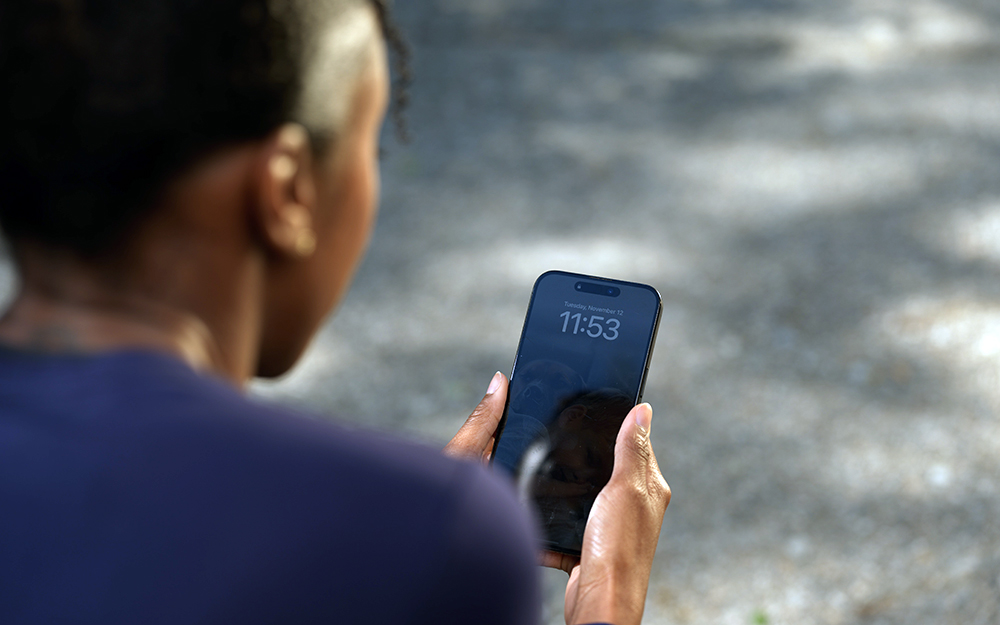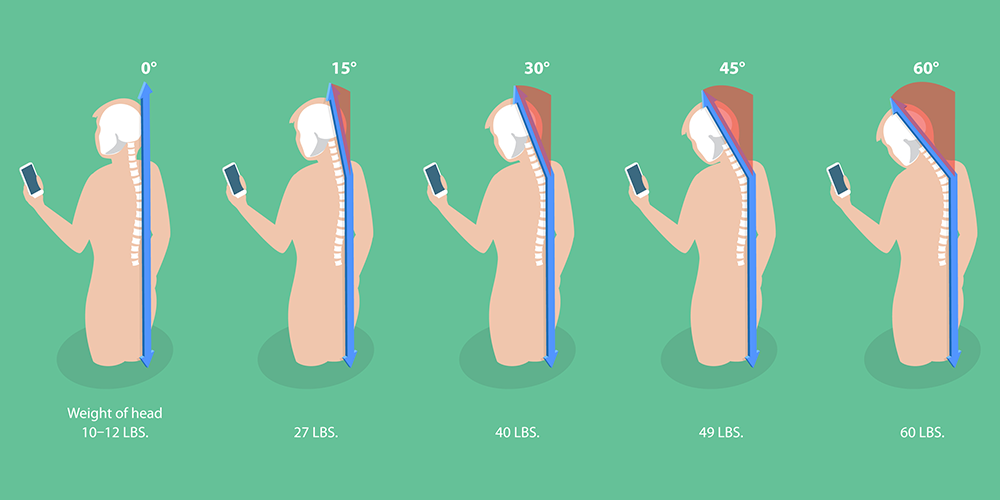Cedars-Sinai Magazine
Tech Neck: Is Your Cellphone Damaging Your Neck?
Feb 03, 2025 Christian Bordal

Have you heard the terms “tech neck” or “text neck”?
They’re not medical terms, but they’re entering the common lexicon.
They describe neck pain caused by the use of technology, particularly cellphones. It’s becoming an epidemic in an era when 91% of Americans own a smartphone and spend, on average, 4½ hours a day looking at it—not talking on it, just looking at the screen.
Neck pain is now the fourth-leading cause of disability in America, with almost a third of the population suffering from it in any given year.
What Is “Tech Neck”?
“It's a sprain or strain overuse injury to your neck that can become chronic,” said Cedars-Sinai orthopedist Andrew Bach, MD.
He sees a lot of people with neck pain, but finds that tech neck is particularly difficult to treat.
“The problem is constantly looking down to use your phone,” Bach said. “But it's really impractical to hold your phone up in front of you, and try telling somebody to stop using their phone so much.”
It's a sprain or strain overuse injury to your neck that can become chronic.”
— Dr. Andrew Bach
Just Looking Down at Your Phone Causes Strain…Really?
How can the simple act of looking down at your phone cause a neck strain or sprain?
It’s simple physics.
Your head weighs about 10-12 pounds, similar to a bowling ball. That bowling ball is perched on top of your spine and held in place by neck and upper back muscles.
When you tilt your head forward to look at your phone, the weight held by those muscles increases significantly: at only a 15-degree tilt, the muscles are supporting about 27 pounds; at 45 degrees, it’s 49 pounds. That’s a lot of weight to hold up for 4½ hours every day.

If you’re having a hard time picturing this, try holding a 10-pound weight next to your body. Easy, right? As you start extending your arm away from your body, it’s still a 10-pound weight, but it starts feeling a whole lot heavier.
Bach said all that work being done by your neck muscles while looking down at your phone can result in a muscle strain or ligament sprain.
“That means there’s a muscle or ligament tear,” he explained. “It might be very mild and at the microscopic level, but it's still a tear. And there's a little bit of inflammation and pain as a result. And if you keep doing it, it just becomes this chronic overuse kind of syndrome.”
Your Spine Might Be Affected, Too
“A lot of people are developing a cervical kyphosis,” Bach said. “The shape of their neck is reversed from what it should be.”
The cervical spine should have a curve called a lordosis, that’s when the middle of the curve points forward toward the Adam’s apple. Kyphosis is when the curve points the other way, giving the top of the spine a hump-backed appearance.
“This can be a normal variation,” Bach said. “But if it’s related to overuse and you have pain, you're probably chronically straining your neck, and it can be the harbinger of more serious neck issues.”
These include headaches, neck pain, decreased range of motion, and over time, pinched nerves in the spinal cord and disc degeneration.
Kids Are at Risk, Too
American kids on average get their first cellphone at age 11. By age 15, almost all kids have one.
Bach is not aware of any evidence-based research on the long-term physical effects on young people growing up with cellphones, but he is concerned about what the effect could be on developing bodies.
“I can't say, ‘If you keep using your phone, you're going to need surgery or have this or that issue by the time you're a specific age,’” he said. “But I think it's likely to cause a lot of neck problems. And I'm worried about their futures.”
What Can You Do About It?
If you’re suffering from tech neck, stretches and physical therapy can help. But in the end, Bach said, if you’re spending a large part of your day looking down at your phone, these methods won’t fix the problem, and it may get worse over time.
“A lot of the time, I think we're not really being productive with our phones, so can we put them down without losing very much? I think that's the No. 1 thing people suffering from tech neck need to do.”
Maybe it’s good advice for the rest of us, too.
How Much Time Do You or Your Child Spend Looking at Your Phone?
You can monitor the amount of time you and your child spend looking at your phones and you can set time limits for specific apps, as well.
To monitor time spent on your Apple iPhone, go to Settings and select Screen Time. You’ll find a wealth of information about how much time you spend on the phone broken down by day and app.
Most Android phones have a similar functionality called Digital Wellbeing. Go to Settings and tap on Digital Wellbeing & Parental Controls. You’ll have to set up a profile the first time you use it.




